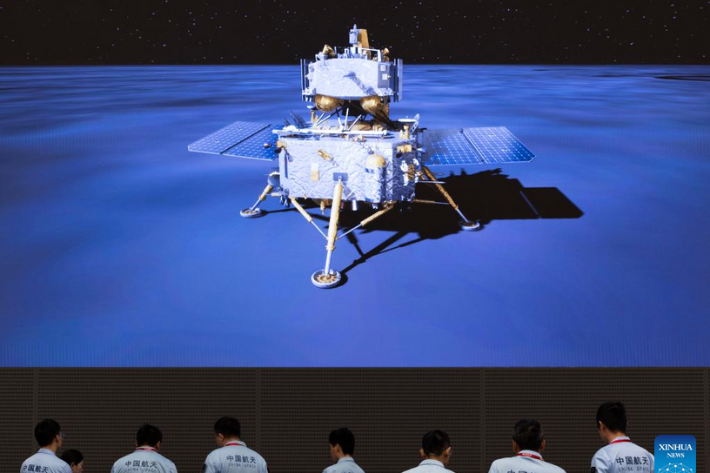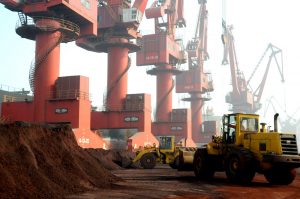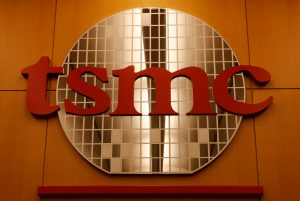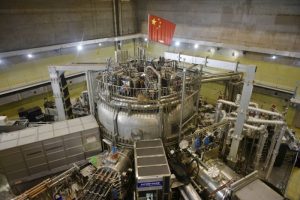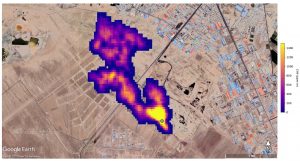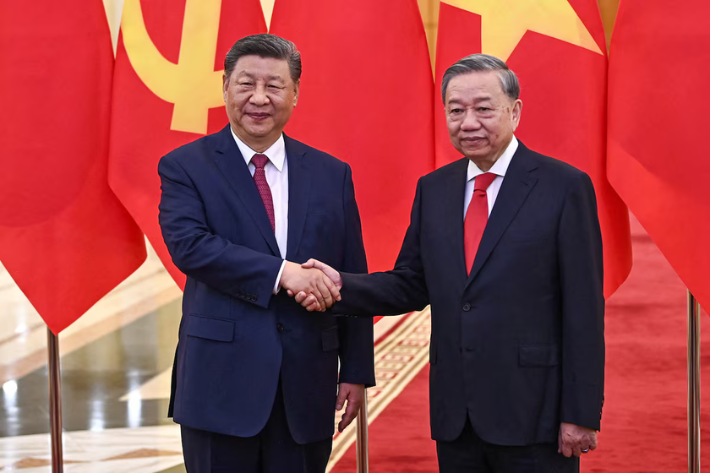China’s Chang’e-6 craft successfully landed on the far side of the moon on Sunday in a mission to retrieve the world’s first rock and soil samples from the region.
Using a scoop and drill, the Chang’e-6 moon lander will aim to collect two kilograms of material from the dark lunar hemisphere over two days and bring it back to Earth.
If the mission goes as planned, it will provide China with a pristine record of the moon’s 4.5 billion-year history and yield new clues on the solar system’s formation.
Also on AF: After Chips, China to Pour Millions Into Solid-State Batteries
It will also allow for an unprecedented comparison between the dark, unexplored region with the moon’s better understood Earth-facing side.
This is China’s second successful mission on the far side of the moon, a region no other country has reached.
The side of the moon perpetually facing away from the Earth is dotted with deep and dark craters, making communications and robotic landing operations more challenging.
“Landing on the far side of the moon is very difficult because you don’t have line-of-sight communications, you’re relying on a lot of links in the chain to control what is going on, or you have to automate what is going on,” said Neil Melville-Kenney, a technical officer at the European Space Agency working with China on one of the Chang’e-6 payloads.
“Automation is very difficult especially at high latitudes because you have long shadows which can be very confusing for landers,” Melville added.
The Chang’e-6 probe was launched on May 3 on China’s Long March 5 rocket from the Wenchang Satellite Launch Center on the southern island of Hainan. It reached the lunar vicinity roughly a week later before tightening its orbit in preparation for a landing.
The craft, equipped with an array of tools and its own launcher, touched down in a gigantic impact crater called the South Pole-Aitken Basin on the moon’s space-facing side at 6:23 a.m. Beijing time (2223 GMT), on Sunday, the China National Space Administration said.
Sample retrieval later this month
Samples that China collects from the lunar far side will be transferred to a rocket booster atop the lander, which will launch back into space, tag up with another spacecraft in lunar orbit and return, with a landing in China’s Inner Mongolia region expected around June 25.
A simulation lab for the Chang’e-6 probe will develop and verify sampling strategies and equipment control procedures, China’s official Xinhua news agency said. It will use a full-scale replica of the sampling area based on exploration results on the environment, rock distribution and lunar soil conditions around the landing site.
The Chang’e-6 mission “involves many engineering innovations, high risks and great difficulty”, the Chinese space agency said in a statement on its website.
“The payloads carried by the Chang’e-6 lander will work as planned and carry out scientific exploration missions.”
Giant leap in space race with US
The landing on the far side elevates China’s space power status in a global rush to the moon. Several countries including the United States and Japan are hoping to exploit lunar minerals to sustain long-term astronaut missions and moon bases within the next decade.
China has previously said it plans to begin building a lunar base using soil from the Moon. It has also announced plans to using 3D printing technology to construct buildings using moon soil on the lunar surface.
China’s lunar strategy also includes its first astronaut landing on the moon around 2030 in a programme that counts Russia as a partner. In 2020 China conducted its first lunar sample return mission with Chang’e-5, retrieving samples from the moon’s nearer side.
Meanwhile, the US Artemis programme envisions a crewed moon landing by late 2026 or later. NASA has partnered with space agencies including those of Canada, Europe and Japan, whose astronauts will join US crews on an Artemis mission.
Artemis relies heavily on private companies, including Elon Musk’s SpaceX, whose Starship rocket aims this decade to attempt the first astronaut landing since NASA’s final Apollo mission in 1972.
Chang’e-6 marks the world’s third lunar landing this year: Japan’s SLIM lander touched down in January, followed the next month by a lander from US startup Intuitive Machines.
- Reuters, with additional editing by Vishakha Saxena
Also read:
China Open to International Team-Ups on Chang’e-8 Moon Mission
Chinese Startup Launches Most Powerful Rocket by Private Firm
China Space Station to Double in Size in Bid to Rival NASA
Russia, China Plan to Build Lunar Nuclear Power Plant by 2035
‘Don’t Help a Villain Do Evil’: China Slams SpaceX ‘Spy Network’
US Space Force General Floats China Crisis Hotline Plan
India Switches Off Pragyan Moon Rover, Sets Sights on Sun
Japan’s SLIM Moon Lander Sparks Back Into Life, Makes Contact
Russian Spacecraft Luna-25 Crashes on The Moon




